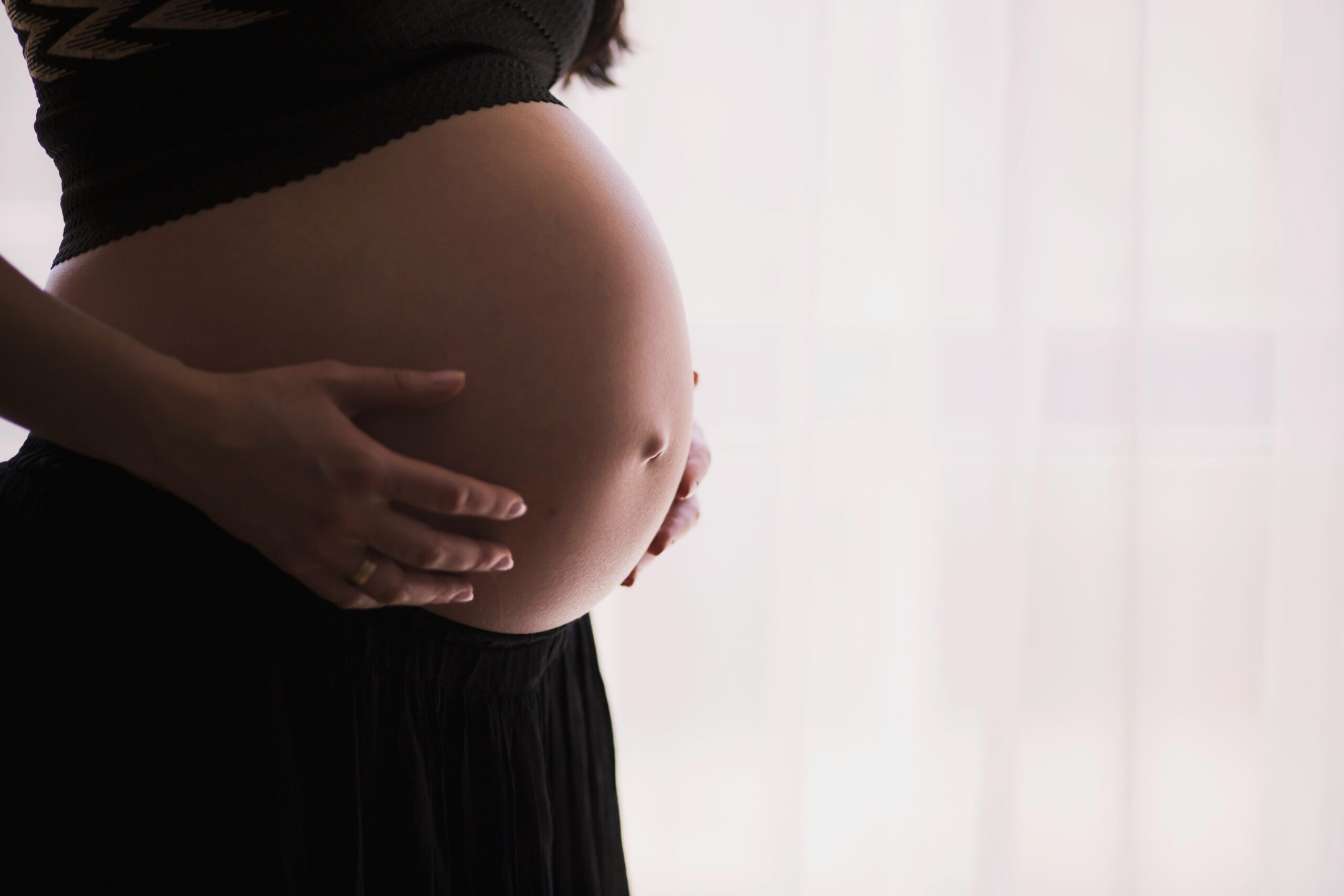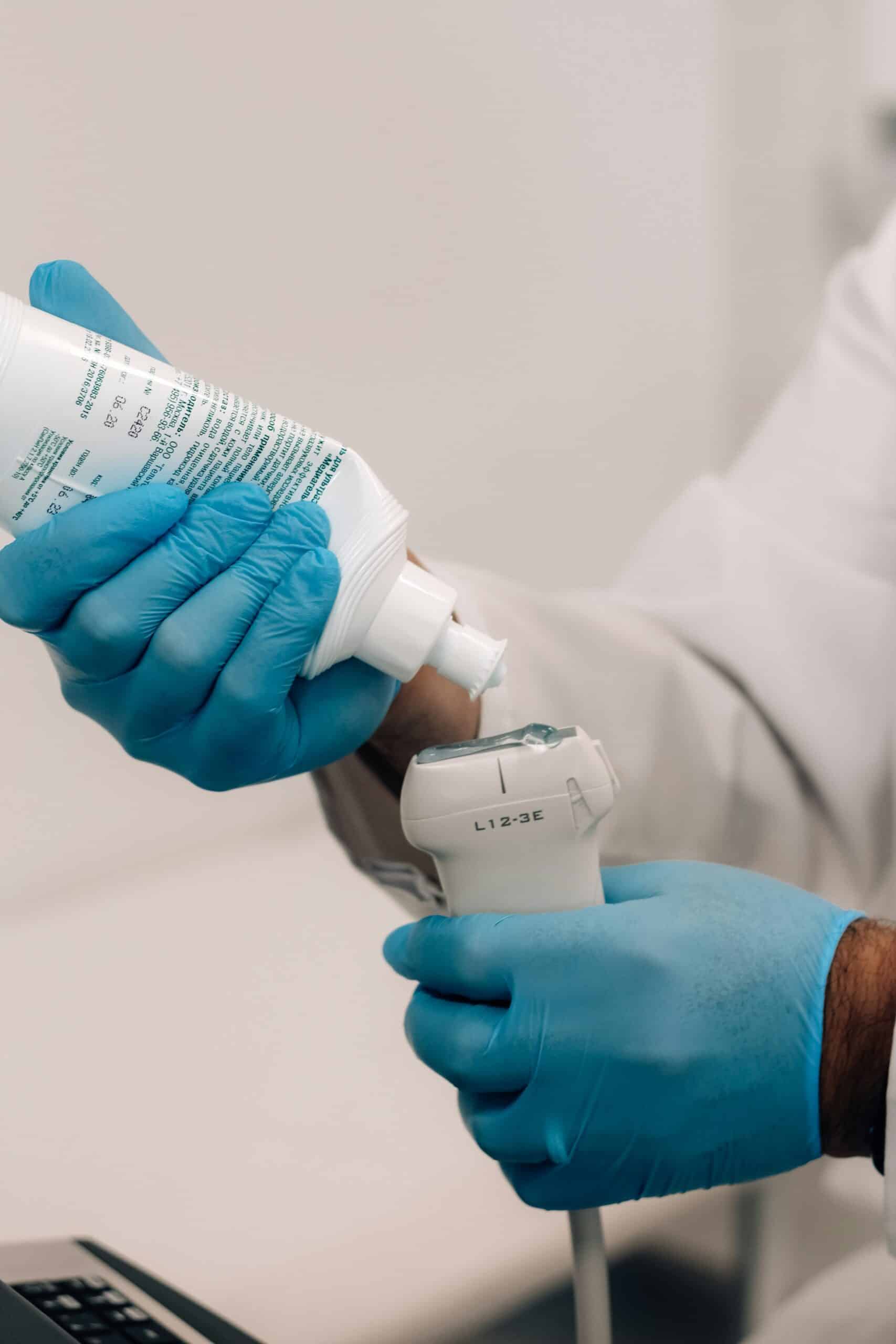Endometriosis touches the lives of about 10 percent of women of reproductive age globally, often bringing persistent pain and fertility challenges that can go unrecognized for years. This guide will illuminate the causes and development of endometriosis, how it’s diagnosed, the crucial symptoms to be aware of, its effects on conception, available treatments—including those that protect fertility—and practical lifestyle adjustments for lasting well-being. We’ll also provide essential questions to discuss with your healthcare provider, empowering you to take control of your reproductive health and explore specialized care at Endo Excellence Center.
What Is Endometriosis and How Widespread Is It?

Endometriosis is a chronic condition where tissue similar to the uterine lining grows outside the uterus, leading to inflammation, scarring, and pain. Leading theories suggest causes like retrograde menstruation, genetic factors, immune system issues, and changes in peritoneal cells. This tissue commonly affects the ovaries, fallopian tubes, peritoneum, bladder, and bowel. Understanding its prevalence—affecting an estimated 190 million people worldwide—is key to appreciating why prompt diagnosis and expert management are so vital.
Endometriosis Prevalence
Around 10% of women of reproductive age worldwide are affected by endometriosis, with prevalence varying by region. Underreporting is common, and it typically takes about 7 years from symptom onset to diagnosis. This underscores the critical need for greater awareness and early referrals to specialists.
What Causes Endometriosis and Which Areas Are Typically Affected?
Endometrial-like implants form when menstrual tissue escapes through the fallopian tubes into the pelvic cavity, attaches to surfaces, and establishes itself in new locations. Genetic predispositions may increase susceptibility, while immune system dysregulation might prevent the clearance of misplaced cells. Common anatomical sites include:
- The outer surface of the uterus and its supporting ligaments
- The ovarian cortex, potentially forming endometriomas (cysts)
- The lining of the pelvic cavity (peritoneum)
- The bladder and the area between the vagina and rectum
These implants react to hormonal fluctuations, causing cyclical bleeding, adhesions, and pain that can envelop pelvic organs and alter normal anatomy, increasing the risk of infertility. Mapping the affected structures is essential for planning surgery and fertility-preserving strategies.
How Does Endometriosis Develop and Progress?
Endometriosis progresses through four stages—minimal, mild, moderate, and severe—based on the location, depth, and extent of adhesions caused by the lesions. Early stages might involve superficial implants on the peritoneum, while advanced cases can feature deep infiltrating nodules and significant scar tissue that binds pelvic organs together. Ongoing inflammation promotes the growth of new blood vessels, nerve infiltration, and further tissue expansion, perpetuating a cycle of pain and functional impairment. Recognizing this progression highlights the importance of early intervention to slow its advancement and protect fertility.
How Common Is Endometriosis Globally?
Global data suggests endometriosis affects 10–15 percent of women of reproductive age, with regional differences influenced by access to diagnosis. Underreporting is frequent, and the average time from symptom onset to diagnosis is about 7 years. While prevalence peaks between ages 25–35, it can continue beyond menopause. Its impact as a public health issue emphasizes the need for increased awareness, prompt referral to specialists, and standardized diagnostic methods.
What Are the Key Symptoms of Endometriosis to Watch For?

Endometriosis presents with a range of symptoms stemming from the bleeding of ectopic tissue, the formation of adhesions, and chronic inflammation. The most telling signs include severe menstrual cramps (dysmenorrhea), persistent pelvic pain, pain during intercourse (dyspareunia), heavy menstrual bleeding, fatigue, digestive issues, and urinary discomfort. Recognizing these patterns early empowers individuals to seek timely evaluation and personalized care, leading to better long-term outcomes and improved quality of life.
What Types of Pelvic Pain Are Associated with Endometriosis?
Pelvic pain related to endometriosis can manifest in several distinct ways:
- Dysmenorrhea – Intense cramping during menstruation, often due to inflammatory substances called prostaglandins.
- Chronic Pelvic Pain – Ongoing ache or sharp pains that occur outside of menstrual periods, frequently linked to adhesions.
- Dyspareunia – Deep pain experienced during sexual intercourse, particularly when lesions affect the uterosacral ligaments or the vaginal fornix.
This pelvic pain can extend to the lower back or thighs and may worsen over time, reflecting the progression of lesions and the severity of adhesions. Effectively managing this pain involves correlating symptom patterns with findings from imaging and laparoscopy.
How Does Endometriosis Cause Heavy Menstrual Bleeding and Fatigue?
The misplaced endometrial-like tissue responds to hormonal cycles, shedding and bleeding along with the uterine lining. These additional bleeding sites can increase the volume and duration of menstrual periods, potentially leading to anemia and widespread fatigue. Iron-deficiency anemia, a common consequence, further contributes to lethargy, difficulty concentrating, and reduced capacity for physical activity. Addressing heavy bleeding through hormonal management and nutritional support can help alleviate fatigue and boost overall energy levels.
What Bowel and Bladder Symptoms Are Linked to Endometriosis?
When lesions affect the rectovaginal septum, sigmoid colon, or bladder wall, they can cause painful bowel movements (dyschezia), bloating, constipation, diarrhea, and sometimes blood in the urine or stool during menstruation if implants invade these organs. Bladder irritation might present as painful urination or a frequent urge to urinate. The timing of these symptoms, often worsening around the menstrual period, helps differentiate them from primary gastrointestinal or urinary conditions and guides the need for imaging and surgical planning.
How Does Endometriosis Impact Mental Health and Daily Life?
The persistent nature of chronic pain, fatigue, and fertility concerns associated with endometriosis can significantly increase anxiety, depression, and feelings of social isolation. Disrupted sleep patterns, reduced productivity at work, and strained personal relationships often accompany the physical symptoms, compounding the overall burden. Incorporating mental health support—such as counseling, mindfulness practices, and cognitive behavioral therapy—is crucial for addressing the emotional toll and fostering resilience, enabling individuals to engage more fully in their treatment and self-care.
How Does Endometriosis Affect Fertility and Conception?

Endometriosis can hinder fertility through several pathways, including anatomical distortion, inflammation, and compromised egg quality. Adhesions can obstruct the fallopian tubes, while changes in the pelvic fluid environment may impede sperm movement and embryo implantation. Ovarian endometriomas can diminish ovarian reserve and affect egg retrieval success during assisted reproduction procedures. Understanding these mechanisms is vital for personalized fertility assessments and timely consultation with a reproductive endocrinologist.
Endometriosis’s Impact on Fertility
Endometriosis can affect fertility through various mechanisms, such as anatomical distortion, inflammation, and altered egg quality. Adhesions can block fallopian tubes, while changes in peritoneal fluid may hinder sperm motility and embryo implantation. Ovarian endometriomas can also reduce ovarian reserve.
What Mechanisms Cause Infertility in Endometriosis Patients?
Key factors contributing to infertility include:
- Adhesions and scar tissue that obstruct the fallopian tubes
- Pelvic inflammation that increases levels of substances toxic to eggs and sperm
- Oxidative stress that can reduce egg quality
- Changes in the uterine lining that impair embryo implantation
Collectively, these factors lower the chances of natural conception, making targeted interventions like surgical removal of adhesions and anti-inflammatory medical treatments essential for optimizing reproductive potential.
What Are the Chances of Getting Pregnant with Endometriosis?
The likelihood of natural conception decreases with the severity of endometriosis. While individuals without endometriosis have a monthly conception rate of 15–20 percent, those with diagnosed endometriosis achieve approximately 2–10 percent per cycle. Overall, 30–50 percent of individuals with endometriosis experience infertility. Early diagnosis and management, combining surgical and medical treatments, can improve these odds, particularly when followed by fertility monitoring.
When Should You Seek Fertility Testing and Specialist Care?
If pregnancy is not achieved after six months of unprotected intercourse for those under 35, or after three months for those over 35, a fertility evaluation is recommended. Early referral is particularly important if you have:
- Known moderate to severe endometriosis
- A history of recurrent miscarriages
- Indicators of diminished ovarian reserve
- A partner with abnormal semen analysis results
Prompt assessment by a reproductive endocrinologist ensures timely identification of any coexisting factors and facilitates access to assisted reproduction if necessary.
How Do Assisted Reproductive Technologies Like IVF and IUI Help?
Intrauterine insemination (IUI) can enhance fertilization by delivering prepared sperm directly into the uterus, but its effectiveness is limited in moderate to severe cases. In vitro fertilization (IVF) effectively bypasses fallopian tube blockages and adverse pelvic environments by fertilizing eggs outside the body and transferring the resulting embryos into the uterus. IVF success rates for endometriosis patients are comparable to those for other infertility causes when combined with appropriate ovarian stimulation and surgical treatment of lesions.
What Pregnancy Risks Are Increased by Endometriosis?
While most pregnancies proceed without complications, individuals with endometriosis may have a slightly increased risk of miscarriage, preterm birth, preeclampsia, and placenta previa. Enhanced monitoring, including early anatomy scans, tracking placental location, and regular blood pressure checks, helps manage potential complications and supports healthy outcomes for both mother and baby.
How Is Endometriosis Diagnosed: What to Expect from Tests and Procedures?

Diagnosing endometriosis typically involves a clinical assessment, imaging studies, and often a definitive surgical procedure. Recognizing symptoms early and seeking specialist care can significantly reduce diagnostic delays and streamline treatment planning. Understanding each diagnostic step helps manage expectations and facilitates informed decision-making with your healthcare team.
What Happens During the Initial Consultation and Pelvic Exam?
Your first appointment will include a thorough review of your menstrual history, pain characteristics, and fertility aspirations, followed by a physical examination. This exam assesses for pelvic tenderness, nodularity of the uterosacral ligaments, and any masses in the ovaries or fallopian tubes. Identifying painful areas during palpation or palpable endometriomas helps guide further imaging studies and the need for surgical evaluation.
How Are Ultrasound and MRI Used in Endometriosis Diagnosis?
Transvaginal ultrasound is effective in detecting ovarian endometriomas and can suggest the presence of deep infiltrating lesions. MRI offers superior detail of soft tissues, allowing for precise mapping of lesion depth and involvement of the bowel or bladder wall. Both imaging techniques are valuable for surgical planning but cannot visualize superficial peritoneal implants, highlighting their role as complementary tools rather than definitive diagnostic methods.
Why Is Laparoscopy Considered the Definitive Diagnostic Procedure?
Diagnostic laparoscopy provides direct visualization and allows for tissue samples (biopsies) to be taken from implants, nodules, and adhesions under magnification. This procedure confirms the stage of the disease, guides surgical removal of lesions, and enables histopathological analysis. As a minimally invasive approach, laparoscopy offers both diagnostic certainty and immediate therapeutic benefit when performed by a skilled surgeon.
What Are the Four Stages of Endometriosis and Their Significance?
The staging system for endometriosis—minimal (I), mild (II), moderate (III), and severe (IV)—is based on the location, depth, and extent of adhesions associated with the implants. Early stages may present with widespread pain despite limited visible lesions, while advanced stages often correlate with greater challenges to fertility. Staging helps predict the likely course of the disease, informs fertility counseling, and shapes treatment plans to balance symptom relief with reproductive goals.
What Treatment Options Are Available for Endometriosis and Fertility Preservation?

A comprehensive treatment plan for endometriosis aims to manage symptoms, preserve fertility, and enhance overall quality of life. Medical therapies work to alleviate pain and suppress lesion activity, while surgical options focus on removing disease and restoring normal pelvic anatomy. Personalized care considers factors such as age, symptom severity, fertility goals, and previous treatment responses.
How Do Hormonal Therapies Manage Endometriosis Symptoms?
Hormonal therapies function by reducing estrogen’s stimulation of endometriosis implants, thereby decreasing inflammation and pain. Common treatments include combined oral contraceptives, progestins, danazol, and GnRH agonists. By inducing amenorrhea (cessation of periods) or lighter menstrual flow, hormonal suppression can shrink lesions and relieve dysmenorrhea. Long-term use necessitates monitoring bone density and potential symptom recurrence upon discontinuation.
What Pain Management Strategies Are Effective for Endometriosis?
Nonsteroidal anti-inflammatory drugs (NSAIDs) help reduce pain mediated by prostaglandins, while medications for neuropathic pain (e.g., gabapentin) can address central sensitization. Pelvic floor physical therapy is beneficial for improving muscular coordination and reducing pain originating from trigger points. Complementary approaches such as acupuncture, transcutaneous electrical nerve stimulation (TENS), and mindfulness meditation can aid in pain modulation without significant systemic side effects.
When Is Laparoscopic Excision Surgery Recommended?
Excisional laparoscopy is typically recommended for individuals experiencing persistent pain, those with endometriomas larger than 3 cm, cases involving obliteration of the cul-de-sac, or those with fertility aspirations. The careful removal of implants and adhesions restores normal pelvic anatomy, improves the chances of conception, and can reduce the recurrence of pain. Expert surgical technique is crucial to minimize damage to healthy tissues and preserve ovarian reserve.
What Are the Considerations for Hysterectomy and Oophorectomy?
Hysterectomy, with or without the removal of the ovaries (oophorectomy), offers definitive symptom relief for severe, treatment-resistant cases where fertility preservation is no longer a priority. Bilateral oophorectomy induces surgical menopause, significantly reducing lesion activity but requiring hormone replacement therapy to manage menopausal symptoms and maintain bone health. Thorough counseling is essential to ensure patients fully understand the benefits and lifelong implications of these procedures.
Are There Emerging or Alternative Treatments for Endometriosis?
Innovative treatments currently under investigation include selective progesterone receptor modulators, aromatase inhibitors, immunomodulators, and anti-angiogenic agents. High-intensity focused ultrasound (HIFU) and laser ablation show promise as noninvasive methods for targeting lesions. While holistic strategies such as anti-inflammatory diets, gut microbiome support, and stress reduction can offer supportive benefits, they are best viewed as complementary to, rather than replacements for, conventional medical and surgical interventions.
How Can Patients Live Well with Endometriosis: Support and Lifestyle Management?

Living well with endometriosis involves integrating medical care with lifestyle adjustments that address pain, inflammation, and emotional well-being. Holistic strategies complement core treatments, helping to build resilience, reduce symptom flares, and enhance overall quality of life.
What Holistic Approaches Help Manage Endometriosis Pain?
Physical therapy techniques, including myofascial release and pelvic stabilization exercises, along with mind-body practices like yoga and meditation, can help modulate pain perception and reduce stress-induced inflammation. Acupuncture may interrupt pain signaling pathways, while heat therapy and TENS units offer targeted relief. Combining these approaches creates a comprehensive toolkit for managing pain effectively.
How Do Diet and Exercise Influence Endometriosis Symptoms?
An anti-inflammatory diet rich in omega-3 fatty acids, antioxidants, and fiber can help reduce systemic inflammation and support hormonal balance. Regular, low-impact exercise, such as swimming, walking, or cycling, promotes the release of endorphins, improves circulation, and can mitigate fatigue. Avoiding processed foods, trans fats, and excessive caffeine may also lessen symptom severity, complementing medical therapies.
What Mental Health Support Is Available for Endometriosis Patients?
Cognitive behavioral therapy, support groups, and online forums provide safe spaces for sharing experiences, reducing feelings of isolation, and learning effective coping strategies. Licensed counselors and psychologists specializing in chronic pain and fertility challenges can assist patients in navigating anxiety, depression, and relationship difficulties. Integrating mental health care into the overall treatment plan supports comprehensive healing.
Where Can Patients Find Community Resources and Support Networks?
Local endometriosis advocacy groups, patient-led support circles, and virtual communities connect individuals with valuable educational resources, peer mentors, and advocacy opportunities. Collaborative care models, which involve gynecologists, reproductive endocrinologists, pain management specialists, and mental health professionals, ensure comprehensive support and empower patients to advocate for timely, personalized care.
What Questions Should You Ask Your Doctor About Endometriosis and Fertility?

Preparing specific questions ensures that your consultations are productive and facilitate shared decision-making. It’s important to clarify details about symptom evaluation, diagnostic procedures, treatment objectives, and fertility planning, enabling informed choices that align with your personal priorities and lifestyle.
What Are the First Signs of Endometriosis I Should Report?
Be sure to discuss any patterns of debilitating menstrual cramps, cyclical pelvic pain that occurs outside of your period, pain during intercourse, and gastrointestinal or urinary symptoms that worsen with your menstrual cycle. Reporting these potential red flags early can expedite the diagnostic process.
How Will My Fertility Be Assessed and Monitored?
Inquire about the specifics of ovarian reserve testing (such as AMH levels and antral follicle counts), semen analysis for your partner, and imaging studies to assess fallopian tube patency and the presence of ovarian endometriomas. Understanding the timeline and methods for fertility testing can help set realistic expectations.
What Treatment Options Are Best for My Symptoms and Fertility Goals?
Ask which medical therapies effectively balance pain relief with fertility preservation, whether surgical excision is recommended for your condition, and how different treatments might impact your ovarian reserve. Discuss the optimal timing of interventions in relation to your family-building plans.
How Can I Prepare for Surgery or Assisted Reproductive Procedures?
Clarify the steps involved in preoperative optimization, such as nutritional status, correction of anemia, and pelvic floor preparation, as well as the details of IVF or IUI cycles, including medication protocols, monitoring schedules, and potential side effects. Being well-informed can significantly reduce anxiety and improve procedural outcomes.
Frequently Asked Questions About Endometriosis Symptoms and Fertility
Can You Get Pregnant with Endometriosis?
Many individuals with endometriosis conceive naturally, although 30–50 percent experience infertility. Assisted reproductive technologies, such as IVF, can improve pregnancy rates by overcoming challenges like adhesion-related fallopian tube blockages and inflammatory pelvic environments.
What Is the Main Cause of Endometriosis?
Retrograde menstruation—the backward flow of menstrual blood through the fallopian tubes into the pelvic cavity—is the leading theory, often compounded by genetic predisposition, immune system dysfunction, and cellular metaplasia.
What Are the Four Stages of Endometriosis?
Stages I–IV classify the severity of endometriosis, ranging from minimal peritoneal implants to deep infiltrating lesions with dense adhesions:
- I (Minimal): Characterized by a few superficial implants.
- II (Mild): Involves more implants, potentially including superficial ovarian cysts (endometriomas).
- III (Moderate): Features ovarian cysts and fine, web-like adhesions.
- IV (Severe): Defined by deep nodules and thick, dense adhesions that can significantly distort anatomy.
Does Endometriosis Pain Improve During Pregnancy?
Many patients report a reduction in pain during pregnancy, attributed to hormonal changes that induce amenorrhea and temporary lesion regression. However, pain may return postpartum or if lesions become less dependent on hormonal influence.
What Is the Best Treatment for Endometriosis?
The optimal treatment depends on individual symptoms and fertility goals. Options include hormonal suppression (like oral contraceptives or progestins) for pain management, laparoscopic excision for persistent lesions, and fertility-focused interventions (such as IVF) for those seeking pregnancy. Personalized treatment plans developed in collaboration with specialists generally yield the best outcomes.
Endometriosis is a complex condition involving inflammatory, anatomical, and hormonal factors that significantly impact both quality of life and reproductive potential. By recognizing key symptoms early, seeking expert diagnostic evaluation, and exploring tailored medical and surgical treatments, you can effectively manage pain, protect your fertility, and embrace holistic strategies that support long-term well-being. Engaging in open communication with your healthcare team and utilizing the specialized resources at Endo Excellence Center ensures that every step taken aligns with your health objectives and reproductive aspirations.

